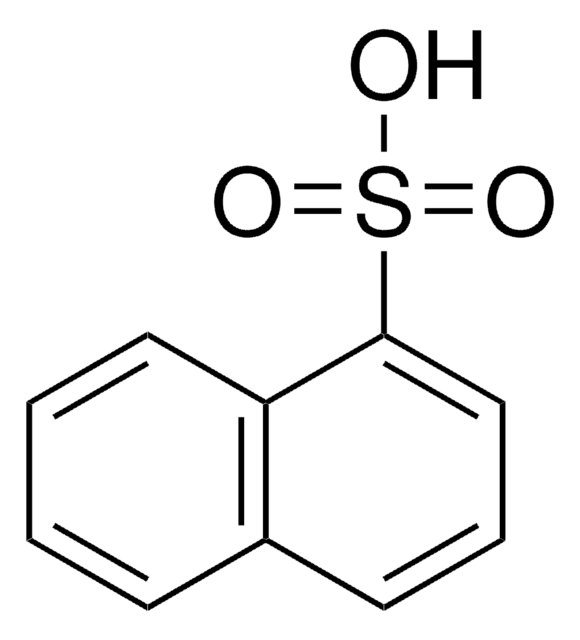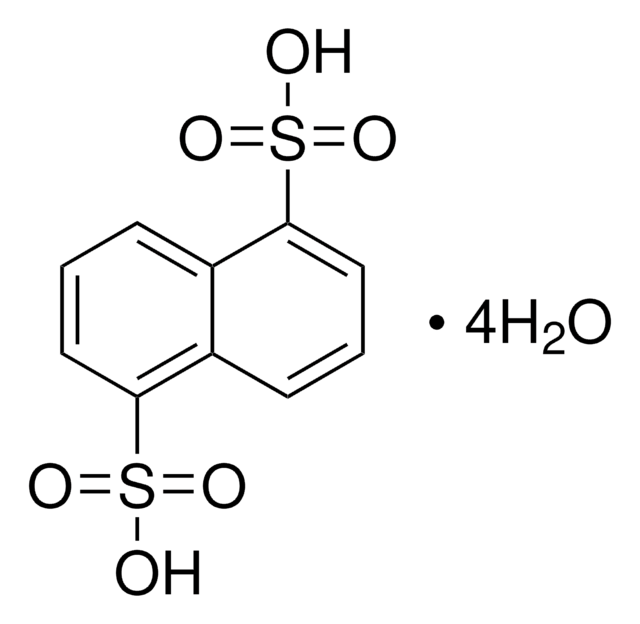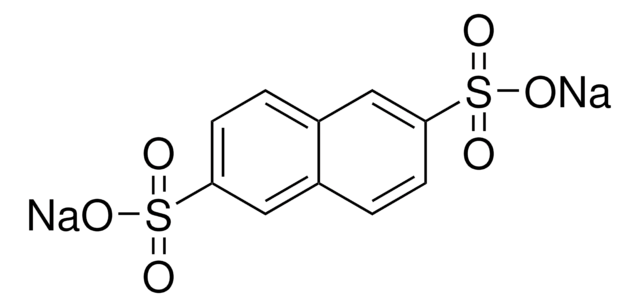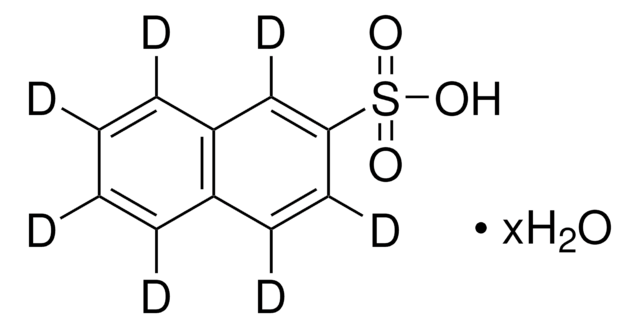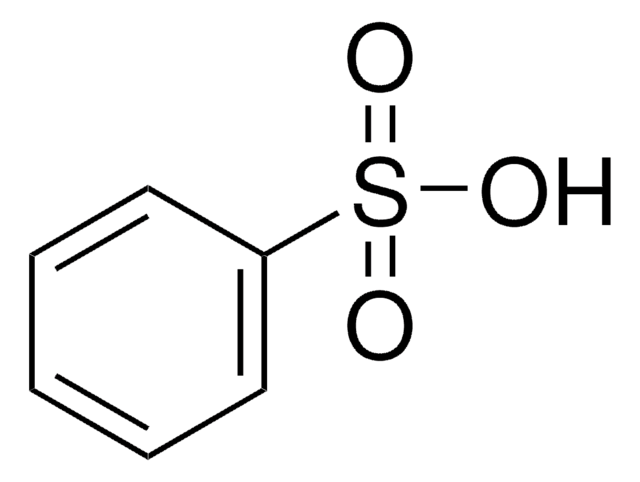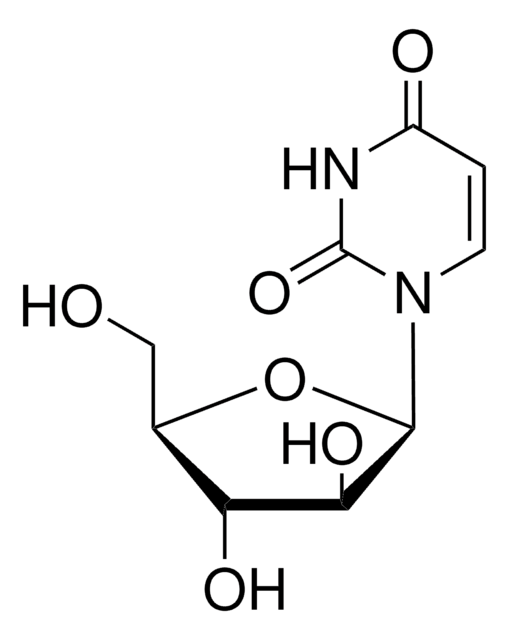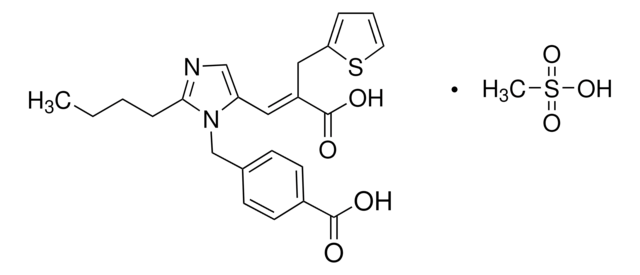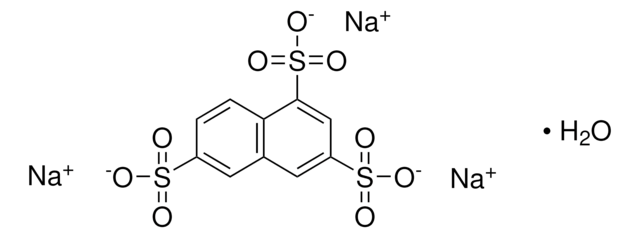249548
2-Naphthalenesulfonic acid
technical grade, 70%
Sinônimo(s):
β-Naphthalenesulfonic acid, 2-Naphthylsulfonic acid, 2-Sulfonaphthalene
About This Item
Produtos recomendados
grau
technical grade
Nível de qualidade
Ensaio
70%
forma
solid
solubilidade
water: freely soluble(lit.)
cadeia de caracteres SMILES
OS(=O)(=O)c1ccc2ccccc2c1
InChI
1S/C10H8O3S/c11-14(12,13)10-6-5-8-3-1-2-4-9(8)7-10/h1-7H,(H,11,12,13)
chave InChI
KVBGVZZKJNLNJU-UHFFFAOYSA-N
Informações sobre genes
human ... EGFR(1956) , LCK(3932)
Categorias relacionadas
Descrição geral
propriedades físicas
Palavra indicadora
Danger
Frases de perigo
Declarações de precaução
Classificações de perigo
Eye Dam. 1 - Met. Corr. 1 - Skin Corr. 1A
Código de classe de armazenamento
8A - Combustible, corrosive hazardous materials
Classe de risco de água (WGK)
WGK 3
Ponto de fulgor (°F)
Not applicable
Ponto de fulgor (°C)
Not applicable
Certificados de análise (COA)
Busque Certificados de análise (COA) digitando o Número do Lote do produto. Os números de lote e remessa podem ser encontrados no rótulo de um produto após a palavra “Lot” ou “Batch”.
Já possui este produto?
Encontre a documentação dos produtos que você adquiriu recentemente na biblioteca de documentos.
Os clientes também visualizaram
Nossa equipe de cientistas tem experiência em todas as áreas de pesquisa, incluindo Life Sciences, ciência de materiais, síntese química, cromatografia, química analítica e muitas outras.
Entre em contato com a assistência técnica